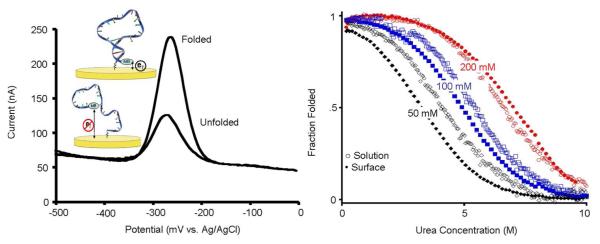Figure 2.
We have employed urea-melts38,39 to determine the folding free energies of a DNA stem loop both in solution (using circular dichroism spectroscopy) and when attached to a gold surface. (Left) We have monitored the latter by measuring electron transfer from a redox tag (methylene blue) on the distal terminus of our stem-loop constructs. Specifically, we used square-wave voltammetry, which is sensitive to the increase in electron transfer efficiency that occurs when the redox tag approaches the surface. (Right) At low ionic strength the stem-loop is more stable in solution than on the surface. At higher ionic strength, conditions under which both solution-phase and surface-attached stem loops are more stable, this trend is reversed.

